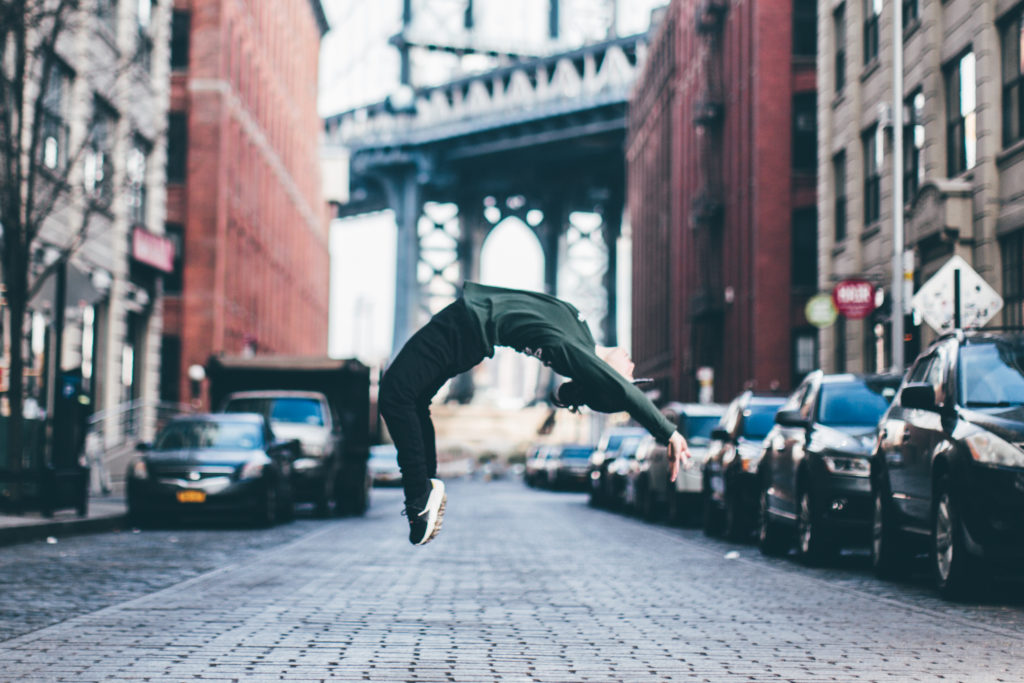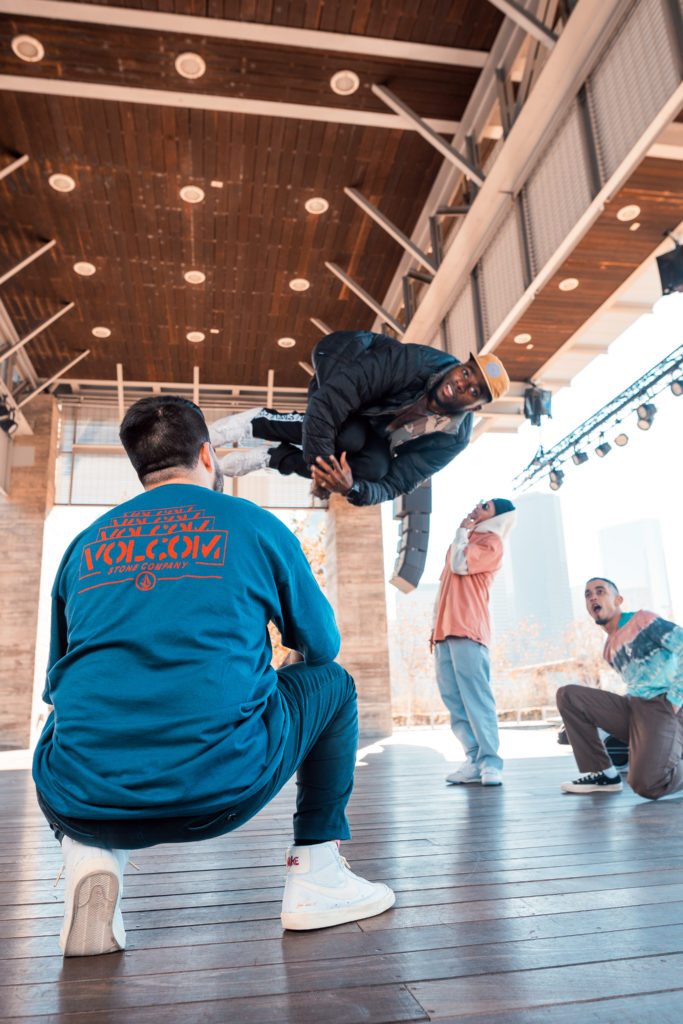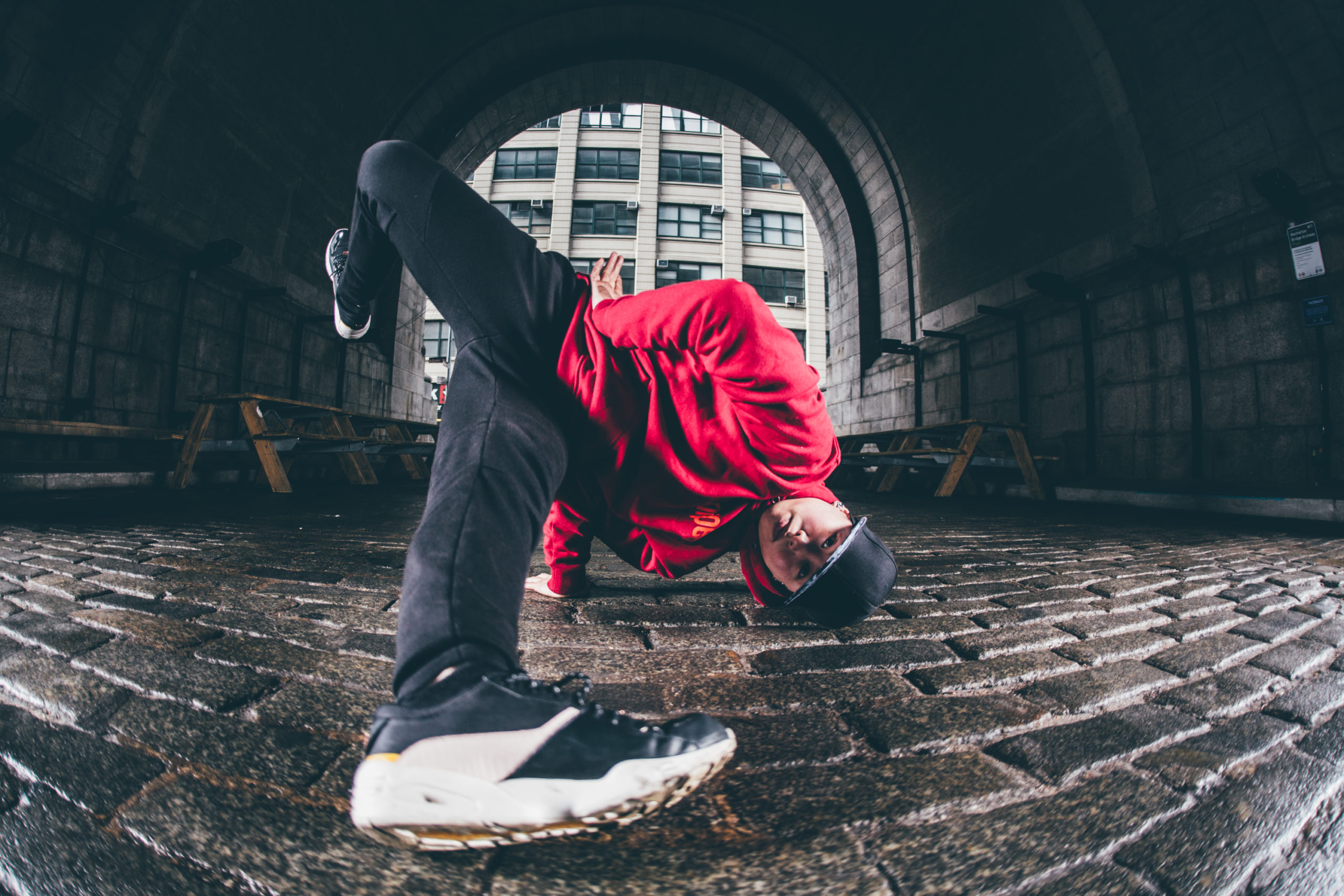Breaking Into the 2024 Olympics
When breaking debuted at the 2018 Summer Youth Olympics in Buenos Aires, the president of the International Olympic Committee, Thomas Bach, planned on observing the new event for just 15 minutes. Instead, captivated by the young dancers’ gravity-defying moves, the music’s irresistible beat and the crowd’s exuberant cheering, he stayed for the whole event.
“To have the face of the IOC believe in what was going on and what the athletes were expressing was a change in direction for us,” says Moises “Moy” Rivas, a renowned breaker from Houston who served as a judge at the Youth Games. “We are amazing athletes and dancers, but it is very rarely recognized.”
With its success at the Youth Games, breaking will become a new sport at the 2024 Summer Olympics in Paris. While breakers around the world ramp up their training, the organization recognized by the IOC to conduct the program, the World DanceSport Federation (WDSF), faces the unprecedented challenge of bringing a dance form to the Olympic stage. “On one side, you have the breakers. One characteristic of breaking is everything is allowed,” says Markus Sonyi, the breaking sports officer at the WDSF. “On the other side, you have the structured international sports federation within an even more structured IOC. These two spheres need to get brought together to bring breaking not only as a pure sport to the Games, but also as a culture.”

“Representing With Integrity”
Breaking—incorrectly popularized as “breakdancing” in mainstream media—is a freestyle dance form from the Bronx. Started in the 1970s, it is a cornerstone of hip-hop culture, along with deejaying, emceeing and graffiti art. The dance consists of roughly five main elements: top rocks (standing dance), drops (transitions to floorwork), footwork/down rocks (floorwork), power moves (acrobatic moves) and freezes (poses). Fundamentals exist within each element, such as the salsa-step top rock, the six-step down rock and the windmill power move. But breakers, also called b-boys and b-girls, are expected to innovate beyond the foundations by creating their own moves that incorporate individual execution.
Central to breaking culture is the battle, in which competitors alternate dancing improvised sets. A set from each competitor constitutes a round, and a battle generally consists of three to five rounds. While the earliest battles occurred on the streets, today’s battles are highly organized competitions with entry fees and cash prizes. The Olympics will retain the battle format in two events, one for b-boys and one for b-girls, each featuring 16 breakers facing off one on one in a single-elimination tournament.
For Logan “Logistx” Edra, who was the 2021 champion and youngest-ever b-girl to win the international breaking competition Red Bull BC One, the battle presents an opportunity to tap into another self. “When I’m battling, I’m not Lo anymore. I’m completely in Logistx mode,” she says. “When I’m angry, sad or tired of dealing with certain things, I can take it out as Logistx.”
Becoming a full-time professional dancer at 12 years old, Edra has garnered a long list of enviable accolades in her seven-year career, including winning Season 2 of “World of Dance” with The Lab. The success came with an unhealthy amount of pressure. “I always felt this expectation as a little girl in the scene. People want your talent to be something that they want it to be, instead of letting it just bloom,” she says. During some competitions, “I just didn’t enjoy it.”

In early 2020, she relocated from Southern California to Florida. By training at BreakinMIA and working with a supportive team of mentors, trainers and friends, she reinvigorated her relationship with breaking at a high competitive level. Her in-season training regimen consists of physical conditioning, dance practice, and strengthening her mental performance. With help from a therapist, she has learned strategies for dealing with her critical inner voice, visualizing moves and stressing less about winning.
Though bringing home Olympic gold is a dream of Edra’s, she prioritizes the larger goal of “representing with integrity the roots of breaking and hip hop,” she says. “If we lose that, breaking might not impact people through the Olympics in the way it’s supposed to.”
“It’s Grassroots Here”
Although breaking was born in the U.S., the country lacks a national governing body for the dance form. To create a pathway for Americans to reach the Olympics, USA Dance formed a breaking division called Breaking for Gold USA, led by a group of veteran breakers.
“We’re volunteering because we have the skills to organize events, do sanctioning forms, write rule books, attend meetings,” says Rich Nyce, Breaking for Gold USA’s chair of the Rules and Eligibility Committee. “The more burden we can take off the competitors to let them train, the better the outcome.”
Within months, the group organized the competition circuit that would determine breaking’s Team USA. Between March and May 2022, Olympic hopefuls competed in regional competitions to earn a spot at the national championship. Team USA will consist of four b-boys and four b-girls, who will then try to earn their spots in the Olympics in the WDSF’s multi-path qualifying process. They will also gain access to training resources that Breaking for Gold USA is currently working on securing.
“Other countries have government programs that fund a lot of this stuff. We’re trying to match our infrastructure to what exists around the world,” says Zack “Cracker Zacks” Slusser, VP of Breaking for Gold USA. “It’s grassroots here.”
Without centralized programming, America’s breakers have taken charge of their own training. Houston b-boy Jeffrey “Jeffro” Louis follows a workout program he initially developed as a college project and has since turned into a fitness company. Called FitBreak, the exercises use low-impact, breaking-inspired moves to improve mobility, strength and endurance. “Some dancers want to gain more stamina, so they go running. For me, it doesn’t make sense,” he says. “I don’t see Michael Phelps running whenever he’s getting ready for a swim meet—he’s swimming! I train my body the way it’s supposed to move for breaking.”

Louis discovered breaking at 10 years old, through his older brother. Considering it a hobby, he planned to quit in college to find a career path that would align with his Haitian-immigrant parents’ values of education and security. He instead received a sponsorship from Monster Energy, which not only helped him pay for his education but also convinced him that breaking was a viable profession.
While Louis, now 27, has practiced physical fitness since his college days, the Olympics motivated him to learn nutrition. He follows a loose ketogenic diet and, through trial and error, has determined his ideal competition weight. On battle days, he will “eat about 15 grams of protein, try to stay low on fat and carbs, and drink a lot of water until the pee is clear,” he says. His calculated approach has paid off—in March, he won the Regionals in Las Vegas and Austin, becoming the first b-boy to earn a place at Nationals.
“You Can’t Put a Number on Art”
Breaking’s rise to larger stages around the world revealed a need for a better judging system. While many methods exist, and have traditionally been highly subjective, the major events leading up to and during the Olympics will utilize the Threefold and Trivium systems. Developed by Kevin “DJ Renegade” Gopie and Niels “Storm” Robitzky with help from others, the Trivium was designed to be fair, transparent and holistic.
“It doesn’t work by prescription but by description,” says Robitzky. Rather than dictate what a breaker must do, the Trivium uses a direct comparison model with no strictly mandated criteria, in which the judges react holistically to what is presented in each battle round. Judges use sliders on an interface to indicate which breaker performed better across six components, organized into three domains. Technique and variety comprise the body, or physical, domain; creativity and personality comprise the mind, or artistic, domain; and performance and musicality make up the soul, or interpretive, domain.
“Breaking really is a combination of art and sport. It’s not like gymnastics, where you have to do a move a certain way and you get points on that,” explains Sunny Choi, a former competitive gymnast who found her way to breaking after a knee injury. “There are thousands of ways to do everything in breaking, and it’s how you do it that makes it great. You can’t put a number on art.”
Creative fulfillment and physical challenge have kept Choi dedicated to the craft since she first fell in love with it as a college student in Philadelphia. Though she now works a full-time job in operations at a prominent beauty company in New York City, she has represented the U.S. at the last two WDSF Breaking World Championships. Learning the right balance has taken time. She used to travel for breaking competitions nearly every month, often overseas, finishing her work on planes, during layovers and well past midnight on many occasions. She burned out quickly.
She now takes a more measured approach. “Being female and into my 30s, dancing every day is no longer really feasible. It’s pretty straining on your joints,” she says. “I do a lot of stability and mobility workouts to make sure my body can take the impact when I’m dancing.” In addition to exercising, she practices breaking three to four times a week, regularly creating new moves and often ending sessions with 50 flares, which involves balancing on her arms and swinging her legs in circles around herself.
Choi, who recently won the 2022 Breaking for Gold USA Regionals in New York City and Phoenix, hopes that the Olympics will allow more breakers to pursue their passion professionally. “It’s tough to make a living off breaking,” she says. “By having more opportunity, money and attention in breaking, there will be more avenues to find a career in it, like you can in so many other sports and dances.”
Improving the sustainability and accessibility of breaking careers would have positive repercussions beyond the dance world and Olympic stage. “Hip hop is a lifesaver,” says Louis. “It’s not something we do leisurely. It’s something that helps us come out of a certain situation, keeps us from negative things in the world, and puts our focus on something positive.”
Kristi Yeung is a writer and dancer currently based in Philadelphia




